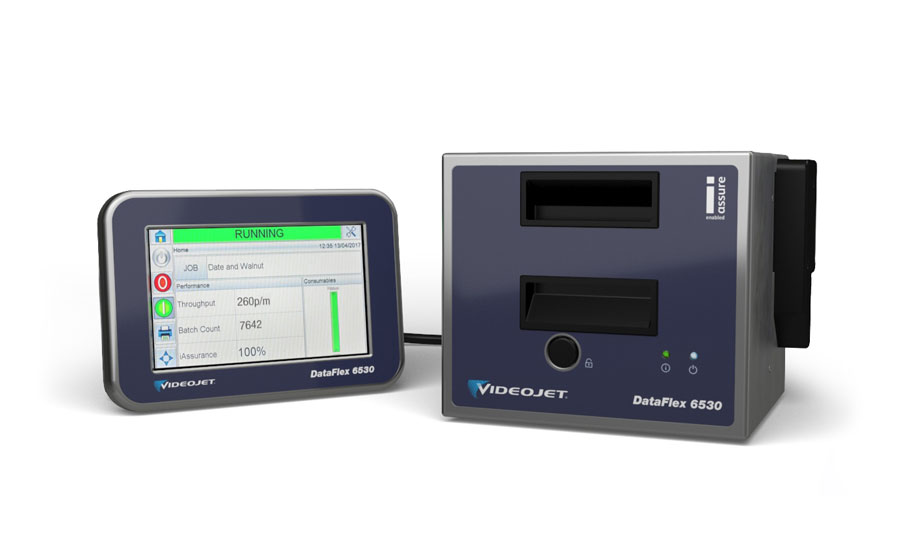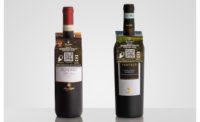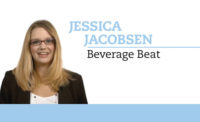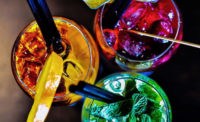Beverage market requesting clean, clear labeling
Coding technology turns to automation to reduce errors

Beauty magazines regularly offer advice and tips to help consumers avoid smudging their makeup. However, for consumer packaged goods manufacturers (CPG), a smudge is more serious than an unflattering photo that won’t get posted on social media.
As consumers demand more and more from brands, companies are stepping up their efforts to ensure that the quality of the packaging aligns with the product. That quality isn’t limited to the packaging materials and aesthetics as coding equipment manufacturers also are helping CPG companies maintain their brand image.
“One of the largest trends impacting coding in the beverage industry is the need for clean, clear labeling,” says Arthur Smith, vertical marketing manager for Videojet Technologies Ltd., Wood Dale, Ill. “As consumers continue to seek more information about the products they consume, equipment manufacturers are continuing to differentiate themselves on code quality. Brand marketers of these products recognize that now, more than ever, code quality impacts their reputation, and careful attention is being placed on the quality and amount of information that can be coded onto beverage containers.”
However, macro trends like SKU proliferation have resulted in more changeovers in coding operations, threatening quality and consistency for beverage-makers.
“A true coding partner understands the importance of clear and consistent print quality and providing technologies that help beverage customers achieve and sustain their operational goals,” Smith says. “Beverage producers operate within some of the most demanding production conditions. Superior coding technologies can accommodate high speeds and rapid line changeovers while delivering high-quality codes, even when condensation is present.”
Antonio Cortes, strategic initiatives manager for Pittsburgh-based Matthews Marking Systems, also highlights the impact new product development and frequent changeovers have had on coding operations.
“New trends are container personalization, packaging material preferences and new creative container designs,” he says. “These trends result in new production processes that require flexible coding systems to be adjustable to a variety of product sizes and codification demands. As the beverage industry searches for new ways to entice consumers by customization of packaging and selecting new materials, coding systems must provide versatile systems that can identify all shapes and materials.”
Yet, quality and changeovers are not the only variables influencing coding technology innovations. Like many industries, sustainability increasingly has become more prevalent.
“There is a continued and heighten focus on sustainability,” says Bill Bonaccorsi, vice president of marketing for Domino Printing, Gurnee, Ill. “Our customers are looking for cleaner solutions.”
Bonaccorsi notes that the demand for more sustainable solutions has motivated Domino to dedicate more time and resources toward its research and development (R&D) efforts.
“Using laser technology to print onto cans versus using inkjet and ink,” he says. “Major companies have stated that they want to move from having any ink jet in their facility. Companies like Domino have stepped up R&D to make this a reality with products like the F720i laser printer.”
Videojet’s Smith also highlights how sustainability trends are driving innovations throughout inkjet operations.
“[A] rising demand in ‘green’ packaging is also impacting the coding market for beverage applications,” he says. “Whether companies refer to it as eco-friendly, sustainable or biodegradable, manufacturers are looking for more ways that their packaging can meet these objectives. From a coding perspective, the Videojet team of expert ink chemists strives to formulate new fluids for customers who have established environmental sustainability objectives with a particular focus on reducing their use of certain solvents, such as methyl ethyl ketone (MEK) or Methanol.”
Investing in automation
Material handling operations increasingly are turning to automation to streamline practices; however, coding technology also is touting the benefits of automation.
“Customers are also seeking coding companies to provide full integration of all equipment (including coding equipment) into their existing [enterprise resource planning/manufacturing execution system (ERP/MES) for autonomous control and data reporting,” Domino’s Bonaccorsi says.
Adem Kulauzovic, director of coding automation for Domino, also highlights the efforts that the company has taken to fulfill customer requests.
“As it relates to coding automation, this is another area that is receiving significant investment and resource allocation,” he says. “Our approach is to offer a combination of off-the-shelf solutions i.e., scan-and-print solutions and database connectivity, but perhaps, more importantly, we are hiring automation experts into our business to support customer projects.
“To provide real value to our customers, we believe we need to thoroughly understand the tools and systems our customers are using,” Kulauzovic continues. “For this reason, we have invested in adding a level of expertise into our business to work directly with customers to help design and implement solutions that become ‘seamless’ in their production environments.”
Among the ways Domino is supporting these efforts is through its release of QuickDesign software, which allows beverage-makers to seamlessly create labels and deploy them to coding equipment from a central or remote location, Kulauzovic says.
“The ability to integrate into a customer’s ERP/MES solution simplifies their interaction with the entire system and eliminates the need to have multiple touches on separate software platforms,” he explains. “We are also incorporating Ethernet/IP connectivity to our coding equipment. This will allow our customers, who choose to communicate directly to our printers, to be able to control our coding equipment through an Allen-Bradley PLC. This eliminates the complications of learning proprietary printing protocol and instead, allowing engineers to communicate to our equipment using familiar hardware.”
Matthews Marking’s Cortes explains that beverage-makers’ requests for coding systems that avoid entry errors have driven the need for production line automation and network integration of coding systems. To fulfill this request, the company offers MPERIA, a software platform that controls Matthews Marking’s technologies, third-party technologies and other devices throughout the production line.
“Developed as a marking and coding automation platform, it manages messages and settings for multiple printers across one or several production lines or packaging locations,” Cortes says. “MPERIA is scalable, allowing the beverage industry to grow without impacting marking systems already in place.
Pairing an intuitive, touchscreen GUI with PC-based hardware, the MPERIA controller is simple to use and is available in several sizes to meet the beverage industry needs. The MPERIA has the ability to drive multiple technologies, such as high resolution inkjet, thermal inkjet, drop-on demand valve jet and laser systems, from a single interface.
“Automation integration functions for scanners, material handling control and custom GUI are also available,” he continues. “Seamless integration with ERP systems and databases helps to reduce coding errors and improves productivity. [The] control functions remotely to alleviate operator error or to efficiently coordinate multiple printers simultaneously.”
Videojet also recognizes the need to alleviate beverage-makers’ concerns about inaccurate codes.
“Coding errors are a problem for beverage companies and have a real cost,” Smith says. “Inaccurate codes can lead to recalls, increased expense to remove the affected product, and may even result in financial penalties. Videojet offers Videojet Code Assurance solutions for both CIJ printers and laser marking systems that help reduce the chance for error, helping beverage manufacturers to get the right code in the right place and on the right product, time after time.
“The industrial [Internet of things] (IoT) has set coding and marking companies on a path to empower customers with better visibility into the productivity of their operating environments,” he continues. “To assist in achieving better printer performance, Videojet has recently launched VideojetConnect Remote Service across the Videojet family of marking, coding and variable data printing technologies. This intelligent solution measures, tracks and provides recommendations for printer optimization. With this service, customers are able to improve printer performance through remote recovery, automated notifications and predictive capabilities to help avoid downtime events.”
Looking for a reprint of this article?
From high-res PDFs to custom plaques, order your copy today!









